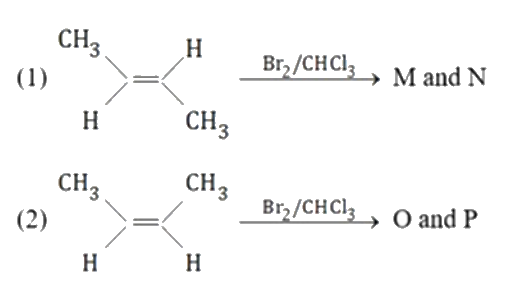The correct statements of the following
100!+1 is not divisible by any natural number between 2 and 100.
If n objects in a row, then the number of ways of selecting two of these objects such that they are not next to each other is .n−1C2.
The number of ways in which we can arrange 20 white identical and 20 black identical balls in a row, so that neighbouring balls are of different colors is 2
none of these
To solve the problem, we need to analyze each statement provided and determine whether they are correct or not.
1. Understanding 100 factorial (100!):
- 100! = 100 × 99 × 98 × ... × 2 × 1, which is an even number since it includes the factor 2.
2. Adding 1 to 100!:
- When we add 1 to an even number (100!), we get an odd number (100! + 1).
3. Divisibility Check:
- An odd number cannot be divisible by any even number.
- Since all natural numbers between 2 and 100 include even numbers, 100! + 1 cannot be divisible by any of these numbers.
4. Conclusion:
- Therefore, this statement is true.
---
Statement 2: "If n objects are in a row, then the number of ways of selecting two of these objects such that they are not next to each other."
1. Understanding the selection:
- We have n objects in a row and we need to select 2 objects that are not adjacent.
2. Total ways to select 2 objects:
- The total number of ways to select 2 objects from n is given by the combination formula:
(n2)=n(n−1)2
3. Adjusting for adjacency:
- If we select 2 adjacent objects, we can treat them as a single unit. This reduces the problem to selecting 1 object from (n-1) units (the pair and the remaining n-2 objects).
- Thus, the number of ways to select 2 adjacent objects is (n-1).
4. Final Calculation:
- Therefore, the number of ways to select 2 objects that are not next to each other is:
(n2)−(n−1)=n(n−1)2−(n−1)=n(n−3)+22
- This matches with the derived formula.
5. Conclusion:
- Hence, this statement is also true.
---
Statement 3: "The number of ways in which we can arrange 20 white identical and 20 black identical balls in a row so that neighboring balls are of different colors is 2."
1. Understanding the arrangement:
- We have 20 identical white balls and 20 identical black balls.
2. Arranging the balls:
- The only two arrangements that satisfy the condition of neighboring balls being of different colors are:
- Starting with a white ball: W B W B W B ... (20 times)
- Starting with a black ball: B W B W B W ... (20 times)
3. Conclusion:
- Therefore, the total number of arrangements is indeed 2, making this statement true.
---
Final Conclusion:
All three statements are correct.
- 100! = 100 × 99 × 98 × ... × 2 × 1, which is an even number since it includes the factor 2.
2. Adding 1 to 100!:
- When we add 1 to an even number (100!), we get an odd number (100! + 1).
- An odd number cannot be divisible by any even number.
- Since all natural numbers between 2 and 100 include even numbers, 100! + 1 cannot be divisible by any of these numbers.
- Therefore, this statement is true.
- We have n objects in a row and we need to select 2 objects that are not adjacent.
- The total number of ways to select 2 objects from n is given by the combination formula:
(n2)=n(n−1)2
- If we select 2 adjacent objects, we can treat them as a single unit. This reduces the problem to selecting 1 object from (n-1) units (the pair and the remaining n-2 objects).
- Thus, the number of ways to select 2 adjacent objects is (n-1).
- Therefore, the number of ways to select 2 objects that are not next to each other is:
(n2)−(n−1)=n(n−1)2−(n−1)=n(n−3)+22
- This matches with the derived formula.
- Hence, this statement is also true.
- We have 20 identical white balls and 20 identical black balls.
- The only two arrangements that satisfy the condition of neighboring balls being of different colors are:
- Starting with a white ball: W B W B W B ... (20 times)
- Starting with a black ball: B W B W B W ... (20 times)
- Therefore, the total number of arrangements is indeed 2, making this statement true.
All three statements are correct.
Topper's Solved these Questions
Similar Questions
Knowledge Check
Choose the correct statements from the following .
ANylon 2-nylon 6 is a polyamide copolymer of alanine .B3-Hydroxy pentanoic acid is a monomer of Nylon 2-nylon 6.CPHBV can never be used in the manufacture of orthopaedic devices.DNone of these .Mark the correct statement from the following :
ACopper metal can be oxidised by Zn2+ ions.BOxidation number of phosphorus in P4 is 4CAn element in the highest oxidation state acts only as a reducing agent.DThe element which shows highest oxidation number of +8 is Os in OsO4
Correct statement of the following is
View SolutionThe correct statement from the following is
View SolutionChoose the correct statement from the following .
View SolutionChoose the correct statement from the following .
View SolutionChoose the correct statement from the following .
View SolutionChoose the correct statements from the following
View Solution

